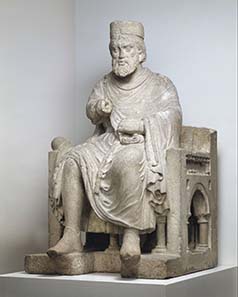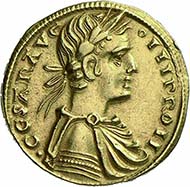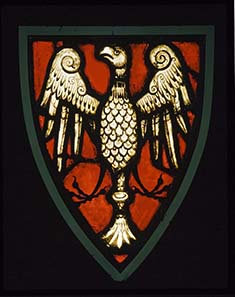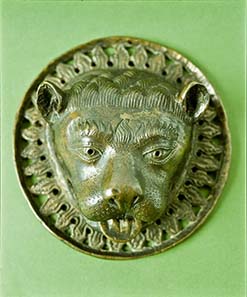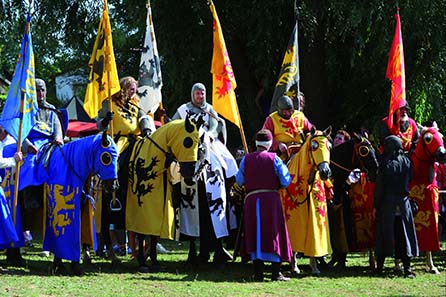September 23rd, 2010 – From September 19th, 2010 to February 20th, 2011 the Reiss-Engelhorn-Museums, Mannheim will stage a monumental exhibition on the Hohenstaufen era. The focus is not on the emperors’ history, but on innovation due to the close contact between Italy and the Holy Roman Empire.
King enthroned, Northern Italy, ca. 1230-1235; New York, The Metropolitan Museum of Art. © 2004 The Metropolitan Museum of Art.
The Hohenstaufen era – the period between the election of Conrad III in 1138 and the execution of Conradin in 1268 – is characterized by tremendous social and cultural changes.
Augustalis of Emperor Frederick II, Photo: Staatliche Museen zu Berlin SPK, Münzkabinett, Acc. 1861 Friedländer, Objektnr. 18204697.
The acquaintance with Antiquity involved a new self-conception of the German emperor, which enabled him to compete with the Roman pope. The church changed, too. During the Hohenstaufen era it lost its monopoly on education. Universities replaced monasteries as educational institutions. Before Frederick I, a few clerks were enough to handle the administration of the Holy Roman Empire; some decades later, Frederick II needed an army of fully trained officials. They became the new elite.
Coat of Arms of the Frankfort village mayor Ludolf, Frankfort cathedral, Hessisches Landesmuseum, Darmstadt ca. 1239, © Hessisches Landesmuseum, Darmstadt.
The medieval city won a new relevance. Communities of self-conscious citizens, who took a part in the new empire, established it as a political factor. Merchants and craftsmen, they created the prosperity, which allowed the new splendor of the royal courts. An active trade and a booming finance allowed social mobility, as did the new availability of knowledge.
A magnificent lion-doorknob from the imperial palace of Wimpfen. Museum für Kunst und Gewerbe, Hamburg Inv. Nr. C 5959. Imperial palace Wimpfen, 2nd half of 13th cent. © Museum für Kunst und Gewerbe, Hamburg.
The artists draw on ancient models, which was just another sign of the changing conception of the world.
The exhibition “The Hohenstaufen dynasty and Italy” addresses these changes. 530 works of major importance dating to this era will be presented. Among them you will find magnificent objects like the king enthroned of the Metropolitan Museum, the coronation coat of Frederick II, the famous Cappenberg head of Barbarossa and the sculptures from the Volturno gate.
Bernhard Kluge, director of the Berlin coin cabinet, has chosen a lot of interesting coins to illustrate this period. Among them, there is a series of Augustales and its fractions featuring a late specimen, probably produced for emperor Henry VII.
An imperial court council will be reenacted on September 25 and 26. Photo: CAB Artis Bamberg.
On the occasion of this exhibition, 41 historical places will host different events connected with the dynasty of Hohenstaufen.
If you want to learn more about the exhibition, the Hohenstaufen and the events, click here.
If you want to listen to music of the era of Hohenstaufen, click here.




